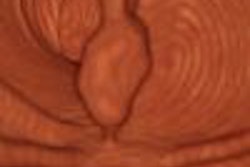A study by researchers at the University of Heidelberg in Germany offers a rare glimpse into the vascular pathology of young adults with childhood-onset renal failure. Using multidetector-row CT and high-resolution ultrasound, the researchers found extraordinarily high rates of vascular pathology in such patients. The research sheds new light on recent hypotheses that seek to explain the mechanisms by which chronic uremia leads to atherosclerosis.
The first studies linking poor kidney function with heart disease appeared in the early 1970s. Over the years, researchers developed a clearer picture of the complex relationship between the two diseases, yielding in the process important clues about the cause of atherosclerosis.
In particular, Dr. Russell Ross from the University of Washington in Seattle is credited with revolutionizing the understanding of the mechanisms of atherosclerosis. In a 1973 paper, he hypothesized that localized injury to the lining of the arteries is responsible for the accumulation of arterial smooth muscle cells, which can accumulate in large masses that eventually block the arteries.
Ross continued his research into atherosclerosis and other circulatory diseases for the next 26 years, publishing scores of multidisciplinary studies before his death in March 1999, of pancreatic cancer.
"The process of atherogenesis has been considered by many to consist largely of the accumulation of lipids within the artery wall," Ross wrote shortly before his death. "However, it is much more than that... In fact, the lesions ... represent a series of highly specific cellular and molecular responses that can best be described, in aggregate, as an inflammatory disease" (NEJM January 14, 1999, Vol. 340, pp. 115-126) .
Last year, British researchers Dr. Mustafa Arici and Dr. John Walls published a review article hypothesizing a complex chain of events leading to tissue formation in response to arterial injury. The authors reviewed the evidence that the uremic state is associated with an altered immune response, which in turn is associated with elevated proinflammatory cytokine levels. This cytokine-mediated response to local arterial injury can be seen in several inflammation markers circulating in the blood.
Among them, C-reactive protein (CRP), which is associated with chronic uremia found in end-stage renal patients, is also the marker most prominently associated with future cardiovascular mortality, the authors wrote. Based on endothelial tissue studies, Arici and Walls hypothesized that CRP, produced in the liver in response to uremia-induced injury, has a pathogenic role in foam cell creation and tissue growth that leads to atherosclerotic lesions (Kidney International, Vol. 59:2, pp. 407-414).
Imaging atherosclerosis
Wunsch and colleagues added an imaging component to this pursuit by examining coronary and carotid artery pathology in 40 young adults with childhood-onset renal failure. In a presentation at the 2001 RSNA meeting, Wunsch concluded that ultrasound and CT showed alarmingly high rates of vascular pathology in the patients.
"It's known that cardiovascular disease is a major cause of increased mortality and morbidity in patients with chronic renal failure," he said. "Patients with childhood-onset chronic renal failure are exposed to long-term cardiovascular risk factors such as ... calcium, hypertension, and chronic infection throughout childhood."
In comparison, the risk of cardiovascular disease in normal patients is extremely low at this age, he said.
"Patients with chronic renal failure have almost 500 times the risk of dying of cardiovascular disease compared with the general population around age 30," Wunsch said. "In fact, they have the same cardiovascular risk as a 70- to 80-year-old person without renal failure."
The median patient age in the Heidelberg study was 28.6 years, and the median duration of chronic renal failure was 19.4 years. The duration of time of end-stage renal failure, which is the point at which most patients began dialysis, was about 13 years, Wunsch said.
Thirty-eight of 40 patients underwent CT calcium scoring of the coronary arteries, and all 40 underwent ultrasound of the common carotid arteries. CT was performed using a multislice scanner and calcium scoring software. Images were acquired in sequential mode, using ECG gating and slices 4 x 2.5 mm thick.
The patients also underwent high-resolution ultrasound using a 12-MHz transducer. Ultrasound was used to measure the intima-media linear thickness (IMT) near the bifurcation of the common carotid arteries, using a 12-MHz ultrasound transducer.
A control group of 40 volunteers matched for age, sex, body composition, and smoking habits also underwent ultrasound, and the results were compared with those of the hyperuremic patients.
According to the CT results, coronary artery calcifications were found in 34 of 38 (90%) of patients. The median calcium score was grossly elevated at 254, compared with a normal range of less than 10 for the same age group, Wunsch said. Cardiac valves were calcified in 12 of the 38 patients, and the ascending aorta was calcified in 8 of 38.
"The degree of coronary calcification was not a function of the patient's age, but rather the calcium score was correlated with cumulative ... years (of) renal disease," he said. "The calcium score increased exponentially when the duration of renal disease was more than 15 years."
Ultrasound results
The second part of the investigation used ultrasound to measure IMT of the common carotid arteries as measured near the bifurcation.
The IMT of all 40 renal patients was significantly higher compared to the healthy controls matched for age, gender, body mass, and smoking habits.
All 40 patients in the control group had IMT measuring 0.6 mm or less, except for one, a two-pack-a-day smoker. Among the 40 end-stage renal patients, 50% had higher IMT measurements -- between 0.7 mm and 0.8 mm. As in the CT calcium scores, years of renal disease, rather than age, was a predictor of IMT thickness, Wunsch said.
There is evidence that atherosclerosis in end-stage renal patients results from chronic uremia and a resulting "increase in the calcium phosphate product, and elevated CRP as a response of the body to inflammation," Wunsch said.
As a result, kidney patients face not only the classic risk factors for atherosclerosis, but additional risks related to hyperuremia, fluid overload, and unrecognized infections. So in addition to minimizing the classic risks of atherosclerosis, Wunsch said, aggressive treatment and careful monitoring of the added risks are the best hope for heading off severe cardiovascular disease.
"Atherosclerosis (patients) showed an increased cumulative calcium phosphate product, especially at the time of dialysis," he said. "So perhaps quite early you have to make the decision to go from dialysis to transplantation."
By Eric BarnesAuntMinnie.com staff writer
January 28, 2002
Related Reading
High calcium scores linked to dramatic increase in coronary event risk, January 24, 2002
CT calcium scoring works, but what does it mean?, January 8, 2002
MDCT yields reliable results for coronary calcium screening, November 28, 2001
MRI reveals long-term statin therapy induces significant plaque regression, November 12, 2001
Copyright © 2002 AuntMinnie.com



















